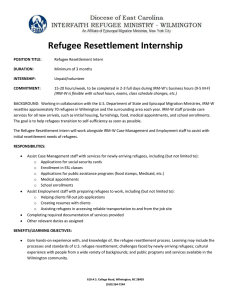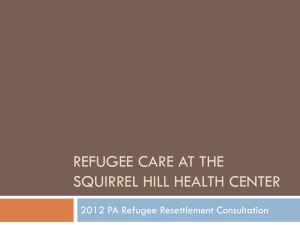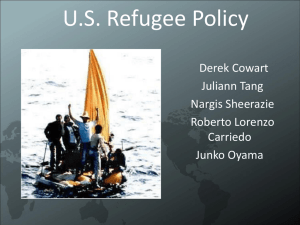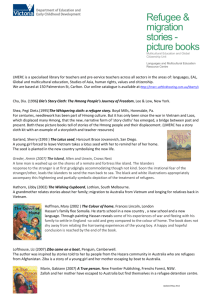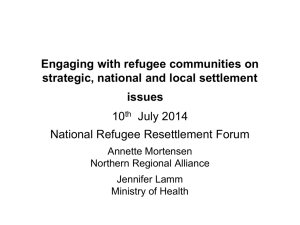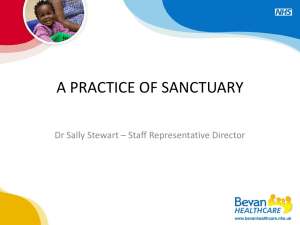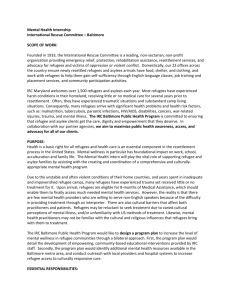North Carolina - The Center for New North Carolinians
advertisement
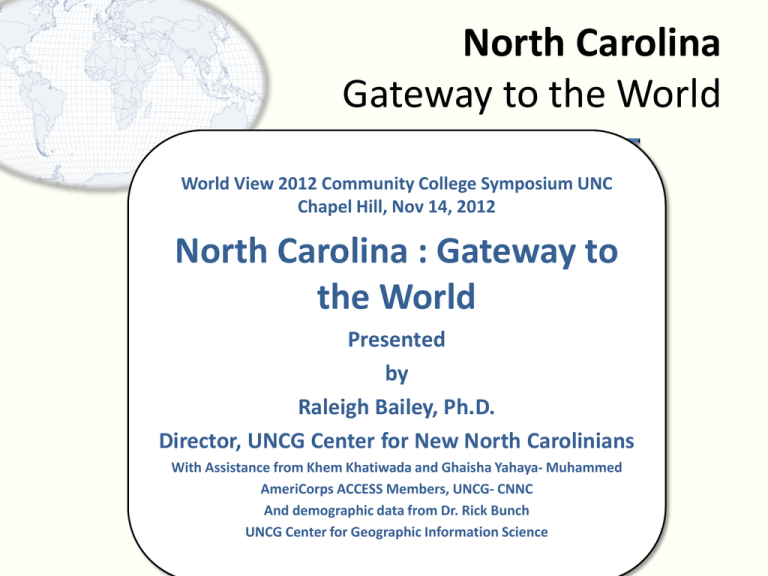
North Carolina Gateway to the World World View 2012 Community College Symposium UNC Chapel Hill, Nov 14, 2012 North Carolina : Gateway to the World Presented by Raleigh Bailey, Ph.D. Director, UNCG Center for New North Carolinians With Assistance from Khem Khatiwada and Ghaisha Yahaya- Muhammed AmeriCorps ACCESS Members, UNCG- CNNC And demographic data from Dr. Rick Bunch UNCG Center for Geographic Information Science 15,000 years ago: the first Americans 1600’s: Colonial era, first Europeans and Africans 1700’s and beyond: secondary migration North Carolina’s Immigrant History World War II and beyond: Creation of United Nations and UNHCR Migrant Workers: Growing Latino population 1965 Immigration Reform Act Vietnam War aftermath Refugee Resettlement Act of 1980 Development of Ethnic Enclaves 1986 Immigration Reform and Control Act 1990’s Economic Boom and Globalization 1996 Illegal Immigration Reform and Immigrant Responsibility Act Why People Migrate to the United States Family reunifications and relatives Employment opportunities Refugees and asylees Non-immigrants: students, tourists, temporary workers… The Refugee Process Refugees are resettled through nationally approved resettlement agencies under contract with the U.S. Department of State and their regional affiliates. Follow up services are provided through contracts with the federal Office of Refugee Resettlement (ORR) and the State level through the Office of the State Refugee Coordinator with the NCDHHSDSS. NC has 8 resettlement agencies with 10 offices. Activities are focused on the Triad, Charlotte, and the Triangle with some resettlement in Craven and Buncombe counties. The Refugee Process Continued In an average year, NC resettles about 2000 refugees, concentrated in the in the Triad, Charlotte, and the Triangle NC ranks as the 10th largest State in the number of refugees resettled annually. It is considered a model state in “success” of the refugees here. Refugees may petition to become LPR’s after a year and request resettlement of family members. NC Hispanic/Latino Growth 800, 000 Latinos in NC Represents 25% of NC’s growth in the last 20 years Represents 8.4% of NC population Latinos have grown by 111% in last ten years Native births have now overtaken migration NC is the 11th largest State in terms of Latino population 61% are from Mexico; 13% from Central America; followed by other smaller %s Latinos are in all NC counties but the largest populations are in: Mecklenburg: 112,000 Wake: 88,000 Forsythe: 42,000 Durham: 36,000 Guilford: 35,000 Cumberland: 30,000 Secondary Migrants A term used to depict people, particularly immigrants moving from one part of the U.S. to another. This becomes a major part of demographics as newcomers move within the country, trying to find the best fit and supportive community. In NC, the Hmong tribal people from Laos came as refugees after the Vietnam War, have picked NC as a major secondary migration site, with close to 15,000 people living in Western Piedmont, Hickory, and Morganton areas. This makes NC the 4th largest Hmong settlement State. Most of these Hmong moved here from other States. Another example is Russian and Ukrainian populations in the Asheville area, most of them coming as secondary migrants. Other cities have small clusters building on the “Ethnic enclave” process. Newcomer Immigration Status Newcomers, non U.S. citizens, may have various types of status when they come to the U.S. The system is complex, confusing, and broken. However, below are some of the common categories. International visitor-temporary visa (not classified as immigrant) International student Out of status, undocumented, “illegal”. Temporary work visa Employment visa: might eventually lead to LPR Status Refugee or asylee (someone who meets UNHCR and DOS definitions of fleeing war or oppression and accepted to U.S.) After a year, this can transition to LPR. Legal Permanent Resident (LPR) Also known as “Green Card” holder even though the card is not green: goal for newcomers who want to eventually transition to becoming a U.S. citizen. After 5 years as an LPR, with good moral character, meeting physical presence and residency requirements, a person may initiate the citizenship application. S/he must be at least 18 years of age and successfully pass the U.S. citizenship test. An estimated 70,000 to 80,000 NC LPR’s are eligible for citizenship and the number is expected to continue to increase dramatically. THE GOAL: Naturalized U.S. Citizen Questions or Comments ? This presentation is available at http://cnnc.uncg.edu
